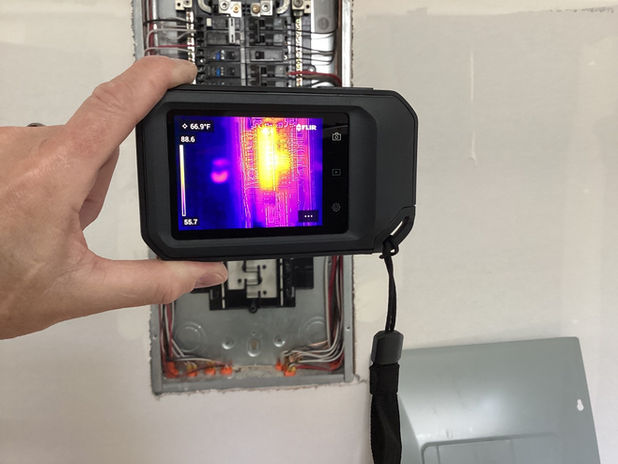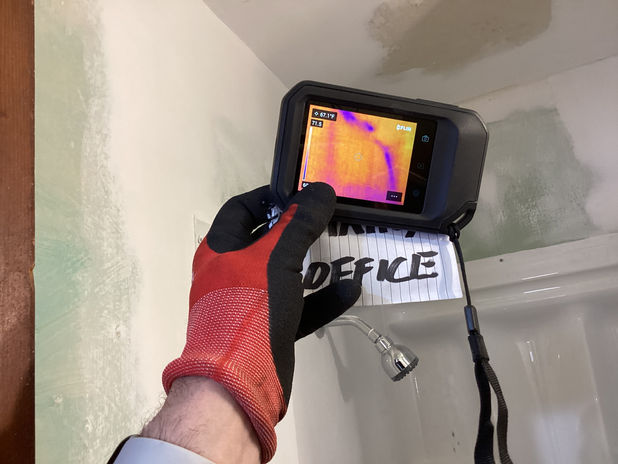WE USE INFRARED
As an InterNACHI® Infrared Certified® Thermography Inspector, our inspector is equipped with an infrared camera to detect issues that may not be visible to other inspectors during home inspections.
Can You See What I See?
Infrared Thermography helps our inspector find things that can't be seen without using this special equipment. Don't settle for less.


We See Things Other Inspectors Can't
BoardWalk's inspector is an InterNACHI® Infrared Certified® Thermography Inspector.
We use a state-of-the-art infrared camera to find problems that aren’t always apparent to the naked eye. An IR camera translates the heat signatures of objects into colors on a gradient scale, with higher temperatures appearing as lighter colors, and lower temperatures and wet areas appearing as darker colors. By evaluating these images, we can detect sources of energy loss, locate areas of moisture intrusion, pinpoint dangerous hot spots in electrical systems, and uncover other problems, such as wood-destroying pest and rodent infestations, as well as flue leaks in chimneys, which can lead to carbon monoxide poisoning.
Certified Thermography Inspection
Clients commonly contact inspectors to assess water stains and determine where the water is coming from. Thermography can verify that there is an increased level of moisture present, and when used in conjunction with a high-quality moisture meter, assist in finding the source. The camera will provide solid indications – adding other data and additional investigative tools help identify the source of the defect.
A thermal imaging camera is not magic; but it is a fantastic and powerful tool, if understood and used properly. To use this tool properly, our InterNACHI® infrared certified inspector has learned how it works and understands the science behind it.
As a necessary part of the certification process, Boardwalk's inspector completed training in building science. Learning about hydrodynamics and thermodynamics, and how water and heat move, is essential to the proper use of thermal imaging. Our inspector understands the physics of thermal imaging, thermal imaging equipment, the basics of building science, thermal imaging applications, and is also familiar with case histories.
Thermal (infrared) imaging displays the temperature differences of objects by visualizing heat variances. We use it to help evaluate the building envelope to detect thermal patterns that indicate defects caused by energy loss, latent moisture, electrical problems, or structural details.
Our inspector is an InterNACHI® Infrared Certified® Thermography Inspector.
We Bring Infrared Equipment to Every Inspection.

We use a state-of-the-art infrared camera to find problems that aren’t always apparent to the naked eye. An IR camera translates the heat signatures of objects into colors on a gradient scale, with higher temperatures appearing as lighter colors, and lower temperatures and wet areas appearing as darker colors. By evaluating these images, we can detect sources of energy loss, locate areas of moisture intrusion, pinpoint dangerous hot spots in the electrical system, and uncover other problems, such as wood-destroying pest and rodent infestations, as well as flue leaks in the chimney, which can lead to carbon monoxide poisoning.






